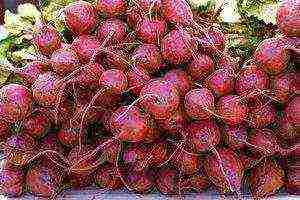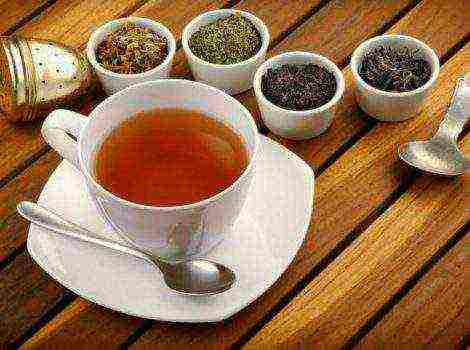Content
Rape is a cultivated hybrid plant that contains almost all the chromosomes of the parent species. Its uniqueness lies in the fact that in the wild, there is no specific ancestor plant.
A lot of fields are sown with this particular crop. First of all, this is due to the wide range of applications of rapeseed in agricultural production.
- Thanks to this plant, you can get the following necessary substances and products:
- Biological oils and fuels
- Natural cosmetics and household chemicals
- Natural vegetable oil for the food industry
- Green product for winter preparations
- Component of feed products
Winter rapeseed
In mid-August, winter rape is sown. It is carried out in rows, between which, a strict distance is observed, not less than 40 centimeters. The first seedlings of the culture, which appear at the very beginning of spring, can withstand frosts with a slight drop in air temperature, below zero.
Very often, winter rapeseed is included in the compound feed for domestic animals. Since in its composition, it is very rich in easily digestible proteins.
It is best to grow this kind in regions where there are no too harsh winters. Since in winter, planting may not withstand very low air temperatures.
There are many varieties of winter rapeseed. The most common are:
Atlant
Suitable for growing, in almost any climatic conditions. Plants are quite tall and grow over 160 centimeters. Atlanta seeds contain a fairly large amount of oils, which is about 45 percent.
90 plants can be planted per square meter.
This variety is a high-yielding variety. This is due to the fact that even with partial freezing in winter, the abundant branching of rapeseed takes up the vacated space, and the culture continues to grow. This also contributes to the fact that weeds practically do not spread in the fields where such rapeseed variety is sown.
Also, this variety is famous for its high resistance to seed dropping and lodging of crops. Also, such a rape refers to plants that have an average disease resistance and are quite winter hardy.
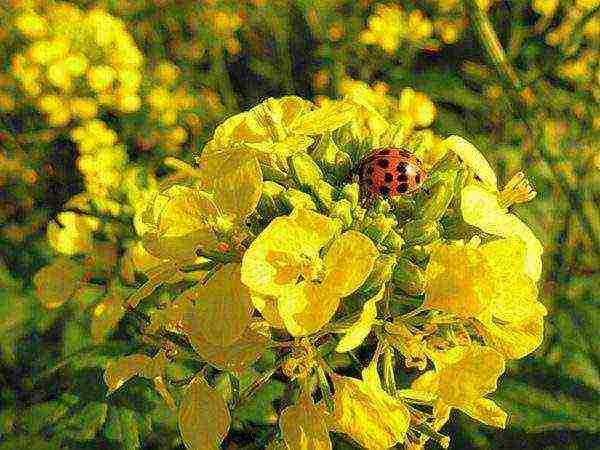
Atlant
freezing
It is considered one of the most resistant species. It tolerates winter well and shows a high yield ratio. Easily tolerates drought and scorching sun. Therefore, it is suitable for sowing in all regions.
It has a very high resistance to various diseases and pests. It tolerates any kind of processing well.
Variety Frost, suitable for both early and late sowing.
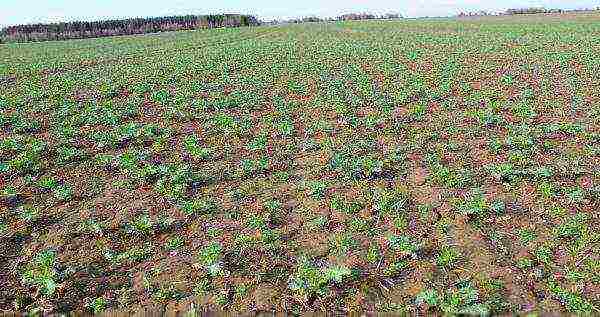
freezing
Stilutsa
This is a fairly young variety of high-yielding rapeseed. Its feature is high quality oil. Also, this species is suitable for feeding purposes.
Stilutsa belongs to mid-season varieties, since its full growing season takes no more than 280 days.
Suitable for growing in all climatic conditions. Resistant to diseases, pests and seed shedding.
The only drawback can be considered a lower indicator of seed weight than other varieties of winter rapeseed.

Stilutsa
Spring rapeseed
Sowing of this type of crops takes place at the very beginning of spring, and the harvest is ready for harvest, already closer to the beginning of August. It has established itself well as a fodder crop, therefore it is grown in many countries.
The first mowing of the plant can be carried out even before the beginning of flowering. From the aftermath that remains, a new crop grows very quickly.
The most famous and popular varieties of spring rape are:
Salsa KL
Refers to hybrid mid-season varieties. On average, the growing season lasts about 110 days.The height of the plant, it is not uncommon, reaches a mark of one and a half meters.
Ripening and flowering takes place simultaneously on all crops.
This variety shows good resistance to seed shedding and plant lodging.
Thanks to its fast and active growth, this hybrid is suitable for medium sowing times.
Salsa KL
VNIS 100
Officially, this rapeseed variety was registered a little over ten years ago. It was bred by crossbreeding and individual selection.
Plant height varies from 110 to 160 centimeters. The best territory for the growth of this variety is the forest-steppe zone, where the yield indicator grows by almost ten percent.
Also, these plants have a fairly high oil content, which is about 44 percent.
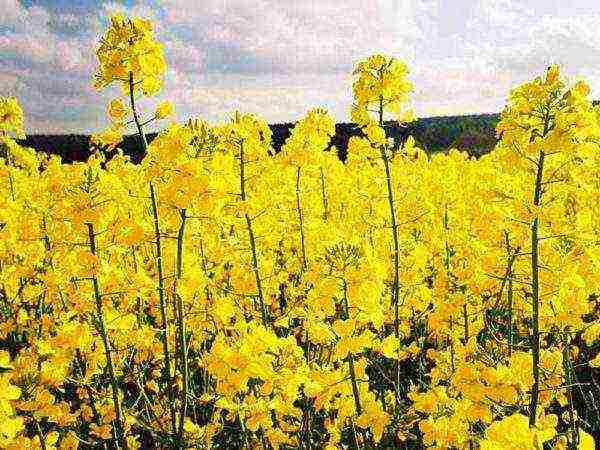
VNIS 100
Olga
This rapeseed variety ripens rather quickly. Its full growing season is no more than 100 days. It was bred through long-term breeding work in Germany.
Has good resistance to shattering and lodging. Differs in a high content of oil in seeds.
Has a fairly high potential for growth and distribution. Withstands almost all climatic conditions.
Recently, the world's vegetable oil producers have started to use rapeseed more and more. This oil is very often added to margarine and fast food.
Unfortunately, rapeseed oil partially remains in the body and negatively affects the state of the human cardiovascular system.
Rape is by far the most demanded agricultural crop. This is due to the high demand for rapeseed processing products and the appearance on the agricultural market of new technologies and high-quality seeds of foreign and domestic selection. Thanks to these factors, farmers manage to get good harvests and, accordingly, profits from rapeseed production. The most famous and frequently used spring rape varieties :
LIPETSKY
The average seed yield is 13-16 c / ha, 100-300 kg / ha higher than the established norms. The basic maximum yield of rape seeds is 38 kg / ha. Average yield of dry matter is 27-36 kg / ha.
Grade 00 type. The content of oil in seeds is 42.7-47.4%, erucic acid in oil is 0.1-0.55%, glucosinolates in oilcake is 0.5-0.7%.
Lipetskiy spring rape seeds are in good demand in central Russia.
Warrior
This variety provides stable seed production. In the arid regions of the Volga region, the average seed yield was 17 c / ha, which is 200 kg / ha higher than the basic standards. Average yield 23-56 c / ha.
The variety belongs to type - 00. Fat content in seeds is 42.1-47.3%, erucic acid in oil is 0.0-0.5%; glucosinolates in the cake 0.4-0.7% (9.4-16.4 mmol / g), protein in seeds - 21-24%. The variety of spring rapeseed Ratnik has established itself well in Lipetsk, Ivanovsk, Rostov and other regions, which testifies to the commercial nature of the variety.
ARGUMENT
Mid-season, highly productive variety. The plant is of medium height (102-105 cm). The growing season is 106-113 days. The average yield of this variety is 28 c / ha. Grade 00 type. The content of erucic acid in the oil does not exceed 0.2%, glucosinolates in the meal 0.6%, the average fat content is 43.2-43.5%, which exceeds the baseline by 0.7%. The protein content in green mass is 14.3%.
MADRIGAL
A highly productive variety, since 1999 it has been included in the State Register of Protected Varieties. The height of the bush is from 92 to 102 cm. There is no anthocyanin shade of the plant. Seeds are round, black, weight of 1000 seeds is 3.4-4.2 g.
The variety is mid-season, the period of full maturation of seeds is 105-112 days. The erucic acid grade is type 00. The fat content in the seeds is 43.6-45.2%, the erucic acid content is 0.29-0.31%, the glucosinolates in the cake are 0.5% (11.6 mmol / g). Protein content 13%.
The value of the Madrigal variety lies in its resistance to climatic stresses, excellent quality of oil and meal, high yield.
LIRA
Lira cultivar was obtained by chemical mutagenesis from Galaxy cultivar (Sweden).
Plant height 99 cm. Cotyledons are wide. The leaf is green, with a characteristic waxy bloom and a medium serration of the edge. Seeds of regular round shape, black color, weight of 1000 pieces 3.8 g. The variety belongs to the mid-season, the growing season lasts 105-108 days. This variety is used for seeds, fodder purposes and for further processing into oil and cake. The average seed yield of the Lira variety is 26-28 c / ha.
Grade 00 type. The content of erucic acid in the oil is 0.29-0.31%, glucosinolates in the meal 0.6%, the fat content of the seeds is not less than 45.2-45.5%.
It has proven itself well in the northern and northwestern regions.
FORUM
An excellent variety for use in the regions of the North Caucasus and Non-Chernozem regions of Russia.
Plants are of medium height - 76-102 cm. There is no anthocyanin shade of the plant. The leaf is green, the waxy bloom is medium. Slight serration of the leaf edge. The petal is bright yellow. Seeds are round, black, the average weight of 1000 seeds is 3.3-4.0 g. The variety is mid-ripening, fully ripe in 99-110 days. Variety Forum is very resistant to shedding of seeds on the vine. Resistance to Alternaria, Fusarium and Peronospora. A high-yielding variety with excellent oil and cake quality. Mainly cultivated for seed and forage purposes. Seed yield of this variety is 22 -23 centners / ha. Type 00 variety. Erucic acid in oil is not more than 0.12-0.22%, glucosinolates in meal 0.4-0.6% (11.65 mmol / g), fat content 44.6-49.5%.
Despite the fact that rapeseed in Russia began to grow at the beginning of the 19th century, today most Russians know little about this culture. Meanwhile, this is one of the most important oil-bearing plants, the economic value of which is increasing from year to year. With each new agricultural season, the sown areas under this crop increase, which also speaks of the promising nature of rapeseed.
The content of the article:
- The origin and distribution of rapeseed
- Economic value of rapeseed
- Rapeseed varieties
- Prospects for growing rapeseed in Russia
- Rapeseed cultivation technology
The origin and distribution of rapeseed
Rape is a herbaceous annual plant of the Cabbage family. It is noteworthy that rape is not found in the wild (if you do not take into account the feral specimens growing like weeds). It is believed that this culture was artificially created about 6 thousand years ago by crossing the rape with ordinary cabbage.
There is no consensus in the scientific community about where exactly rapeseed first appeared. Most experts believe that the plant is native to the Mediterranean region.

For a long time, rapeseed was of little importance to agriculture. Only in the 16th century, with the beginning of the agrarian revolution in England and Holland, they began to actively cultivate it. Then rapeseed began to spread rapidly further into continental Europe, reaching Russia at the beginning of the nineteenth century.
Until the 1970s, rapeseed cultivation was mainly focused on feed purposes for cattle. It was during this period that a campaign to promote rapeseed oil to the consumer market began in Canada. Since then, the world rapeseed production has grown rapidly. This process accelerated noticeably in the 2000s, when the demand for biofuels for cars increased. Rapeseed oil has proven to be an excellent feedstock for biodiesel.
As for our country, in Soviet times, when the economy was planned and extremely centralized, the importance of oilseed rape was questioned. Low domestic demand, a lack of quality varieties and a weak base of plant protection products led to the fact that in the post-war years, this crop was almost completely stopped growing on one sixth of the land.
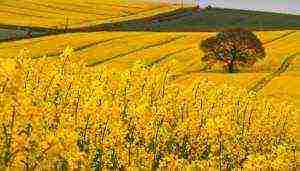
The idea of resuming the cultivation of rapeseed in the USSR was returned in 1980. Then, in Lipetsk, the Rapeseed Institute was even created, which was engaged in improving the varietal base.In subsequent years, the area under crops increased, but not at a very high rate. Only in the 2000s, against the background of the stabilization of the economic situation in the country and the introduction of agrotechnical and breeding achievements of the last decades, a rapid growth of the sown area under this crop began. So, if in 2005 200 thousand hectares were allocated for rapeseed, then in 2013 it was already more than 1300 thousand hectares.
But in the global rapeseed production, Russia still remains a secondary player. While in our country annually only about 1 million tons of rapeseed are produced, in Canada they produce 15 million tons, in China - 14 million tons, in India - 7-8 million tons, in Germany - 5-6 million tons
Economic value of rapeseed
For a long time, rapeseed was grown as a fodder crop for livestock, primarily cattle. Since this plant has a large green mass and nutritional composition of the stems, it was actively used as a pasture crop. Until now, many farmers grow rapeseed for this very purpose.

Nevertheless, the main direction in the cultivation of rape is still the production of oil. Globally, its production ranks third after palm and soybean. And the volume of world import / export of rapeseed oil is second only to the mentioned oils, as well as sunflower oil.
It is noteworthy that the scope of use of the rapeseed oil itself is quite extensive. Firstly, after deep processing, it is used in home cooking, as well as in the production of oil-containing food products. The palatability of rapeseed oil is close to that of olive oil, which makes it one of the best among all food grade vegetable oils.
Secondly, oilseed rape can be used for technical purposes. In fact, modern interest in rapeseed began during World War II, when Canada began to grow it for the production of lubricants for military equipment from its oil. Until now, it is actively used in the chemical industry, including for the manufacture of lubricants.
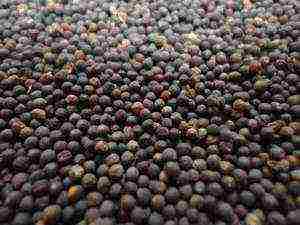
Thirdly, the rise in the price of oil products due to a series of fuel and energy crises of varying magnitude that took place in 2004-2013, as well as the tightening of environmental legislation in the EU, increased the demand for biofuels. One of the most suitable crops for the production of biodiesel was rapeseed.
Finally, it is a good green manure, that is, rapeseed can be used as a fertilizer for the soil. It is also a great honey plant. From 1 hectare of rapeseed, bees receive up to a centner of high-quality honey. Also, do not forget that when processing seeds into oil, a large amount of cake remains, which is in great demand on livestock farms as feed for livestock.
Rapeseed varieties
As with other important crops, there are dozens, if not hundreds, of rapeseed varieties in every country that are adapted to local climatic conditions. It makes no sense to list them all, since even each climatic region of Russia has its own varieties. Let's just look at the general classification.

Currently, farmers cultivate two main types of rapeseed: winter and spring. There are no significant differences in morphology between them. The only difference between them is that winter rape is better able to withstand winter cold, but more vulnerable to drought. Of course, winter rape also has a higher yield: up to 30 tons of green mass from 1 hectare in the fodder direction and up to 3 tons of grain in the oilseed direction. For comparison, spring rape yields no more than 1.5 tons of grain per hectare.
Another classification of varieties is based on the intended purpose of the crop. The following types of varieties can be distinguished here:
- food,
- technical,
- fodder.
Food varieties are designed to provide valuable vegetable oil for culinary purposes.Back in the 1960s, when attempts were made to bring rapeseed oil to the consumer market, demand for it was almost zero due to its unusual greenish color and unpleasant aftertaste. Through the efforts of geneticists, special rapeseed varieties were bred, the oil of which is as close as possible in its characteristics to olive oil or even surpasses it. A distinctive feature of these varieties is the low content of erucic acid and high oleic acid.
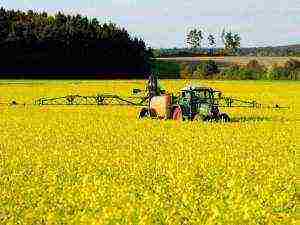
Rapeseed is technically focused on obtaining raw materials for the chemical industry and primarily for the production of biofuel. On the contrary, these varieties contain a lot of erucic acid.
The forage varieties are characterized by a high protein content in the green mass and a minimum level of glycosinolates. They also generally have larger shoots, as they are what the farmers need.
Prospects for growing rapeseed in Russia
For domestic agricultural enterprises, absolutely all types of rapeseed varieties are of interest - fodder, industrial oilseeds, food oilseeds. As a green fodder for livestock, rapeseed has almost no analogues among annual plants. It is characterized by high nutritional value and high yield. Using it in the crop rotation of a crop complex at a livestock farm can give excellent results. Especially when there is a shortage of natural green pastures. Rape as a green manure saturates the soil with potassium, phosphorus and nitrogen.
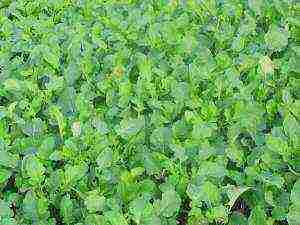
Technical rapeseed oil is in very little demand directly in Russia itself. However, there is a large European market nearby, which is in great need of this raw material for industrial processing. There is also a great demand for rapeseed oil in neighboring China.
Edible rapeseed oil is also mainly exported, since the domestic market is practically not interested in it. Niche consumers are too accustomed to sunflower oil and even olive oil are very wary. Against this background, rapeseed oil is often perceived as very negative.
Since rapeseed is a raw material for the production of biodiesel, its prices are directly related to the cost of petroleum products. In 2005-2013, rapeseed oil was constantly getting more expensive, which resulted in a rapid growth of its production in Russia. However, in 2014-2016, when world oil prices went down, they were followed by prices for rapeseed. And although it did not fall in price as radically as oil, domestic farmers, for whom the sale of rapeseed began to bring less money, in the last two or three years, slightly reduced the area under this crop.
Rapeseed cultivation technology
In Russia, the cultivation of winter rapeseed is based on the use of “00” type varieties (not containing erucic acid and with a minimum glucosinolate content).
As a precursor to rapeseed, crops are recommended that release arable land early (mainly cereals). Sowing rapeseed after other cabbage crops should be no earlier than 4 years later, and after sunflower earlier - after 5 years.
An important stage in the preparation of the rapeseed field is the semi-steam system. Immediately after harvesting the predecessor, the soil is peeled once or twice, followed by moldboard plowing with rolling and cultivation. In this case, you need to maintain a pause of 20 days between plowing and sowing.
Nitrogen fertilizers are applied only before sowing and in spring. It is not recommended to apply nitrogen in autumn. For pest control, pre-sowing treatment of seeds with insecticides and fungicides is carried out. During the growing season, it is permissible to use some of the permitted plant protection products.
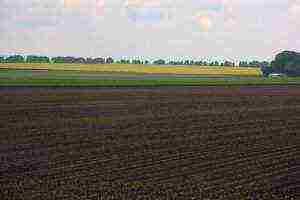
The sowing time for winter rape is determined so that by the onset of cold weather the plant forms 7-8-leaf rosettes. It is also possible to determine this time by the timing of sowing of winter crops: 3-4 weeks should remain before them. Sowing rapeseed earlier or later than these dates is not equally recommended.
The seeding rate for winter rape is selected so that about 55 plants per square meter are obtained in spring.In practice, this means about 70 seeds per square meter, which corresponds to 3.3 kg / ha.
Rape is harvested when the seeds reach full ripeness, the timing of which depends on the varietal characteristics and, of course, the timing of sowing. You can tell if the seeds are ripe by their shiny black-brown color. For threshing, combines with a special header are used. Since rapeseed is much finer than wheat grain, the use of standard equipment results in large yield losses. Today most farmers practice direct threshing without mowing the plants first. The harvested crop is subject to mandatory drying.
Let us recall that the yield of winter rape is on average about 3 tons of oil grains per hectare. However, in Russian realities, this figure does not exceed 2 tons.

Rape is a valuable oilseed high-protein crop for food, technical and fodder use, which is characterized by a huge innovative resource for the agriculture of countries around the world.
New varieties and production technologies make it possible to increase the gross harvest of seeds by 40-50%, fodder protein - 21-25%, livestock productivity - 13-17%.
Spring rapeseed variety - Lipetsk... Highly productive, mid-season variety of spring rape, which combines a fairly high yield and high quality seeds, resistance to major diseases.
The variety was created through individual selection from the Swiss Consul variety.
The stem reaches 92-100 cm in height, the bush is semi-closed. Stem without anthocyanin, dark green, slightly pubescent. The lower branches are attached at a height of 30-58 cm. The number of branches of the 1st order is 4. The flower is golden yellow. The leaf is smooth, oval, dark green. The pods are not pubescent, without anthocyanin, the valves are medium lumpy. Seeds are black, round. The mass of 1 thousand seeds is about 3.6-5 grams.
The duration of the growing season is 80-130 days. Resistant to shattering and lodging. Susceptible to Alternaria and Peronosporosis below average. Competitiveness. With the help of high quality seeds and productivity potential, it is quite competitive and approved for use in production.
The variety is characterized by a fairly high yield - 1.45-1.75 t / ha (maximum - 3.8 t / ha). It has high quality meal and oil. Suitable for mechanized harvesting. Recommended for growing for seed and forage purposes. The seeds contain 42.8-47.5% fat, oil 0.12-0.61% erucic acid, meal 0.52-0.71% glucosinolates.
Spring rapeseed variety - Argument... Highly productive, mid-season variety of spring rape, which combines a fairly high yield and high quality seeds, oil, meal, tolerance to major diseases.
The variety was created by individual selection from the Global variety.
The stem height is 102-105 cm. There is no anthocyanin coloration on the plant. On hypocotyl, anthocyanin is very weak or absent. Leaf without anthocyanin, green, characterized by a strong waxy bloom. The flowering time is average. Pod of medium length, no spout. Seeds are black, round. The mass of 1 thousand seeds is 3.7-3.9 grams.
The duration of the growing season is 106-113 days. Resistant to shattering and lodging. Susceptible to Alternaria and Peronosporosis is below average, but weak to Fusarium. Competitiveness. With the help of high quality seeds and productivity potential, it is quite competitive and approved for use in production.
Yielding variety - 2.8 t / ha, is characterized by high qualities of meal and oil, and is technologically advanced. Suitable for mechanized harvesting. Recommended for growing for seed and forage purposes. The seeds contain 43.3-43.6% fat, oil 0.2% erucic acid, meal 0.58-0.6% glucosinolates. Protein in the green mass contains 14.4%.
Spring rapeseed variety - Visit... Combines high quality seeds and high productivity, resistance to fusarium.The variety was created by hybridization of the Coin x Global varieties with further individual selection.
The plant is characterized by an average height. The anthocyanin coloration of the plant is absent, the hypocotyl is weak. Leaf without anthocyanin, green, has a medium waxy bloom. The serration of the leaf edge and the degree of development of the lobes are average. The petal is yellow. Anthers are spotted. Flowering duration is average. Pod of medium length, no spout. Seeds are black, round. The mass of 1 thousand seeds is 3.15-3.65 grams.
The variety is mid-season, the duration of the growing season is 75-84 days. Resistant to shattering and lodging. It has a fairly high degree of adaptation to various agro-climatic conditions. Below average, the variety is affected by oversporosis and alternaria, moderately resistant to fusarium. Damaged moderately by rape blossom beetle, severely by cruciferous flea beetles. Competitiveness. Thanks to its excellent adaptability, high seed quality and productivity potential, it is quite competitive and approved for use in production.
Yielding variety - 2.5 t / ha, characterized by high qualities of meal and oil, and is technologically advanced. Suitable for mechanized harvesting. Recommended for growing for seed and forage purposes. The seeds contain 43.8-47.7% fat, there is practically no erucic acid in the oil. Protein in the green mass contains 21.4-23.9%.
Winter rapeseed variety - Anna... The variety was created by the method of individual selection, together with the Institute of Field and Vegetable Crops, Serbia, Novi Sad.
The variety is characterized by high seed productivity and excellent oil qualities. The duration of the growing season is 280 days. Plants have a straight, branched, rounded stem that reaches 160 cm in height. The flowers are yellow, large, clustered in a cluster-like inflorescence. The seeds are black, the fruit is a pod. The mass of 1 thousand seeds is 4.3 grams. Yielding variety - 4.6 t / ha. The seeds contain 45% fat, there is no erucic acid.
The variety is resistant to shedding and lodging. It is characterized by high winter hardiness. Suitable for mechanized harvesting. Compared to the standard, it is less affected by pests and diseases. Recommended for growing in all areas. Since 2006 it has been included in the register of varieties.
Winter rapeseed variety - Anlant... The variety is high-yielding, due to the intensive branching of plants, it is able to occupy free space, this will make it possible to obtain high yields of seeds and suppress almost all annual weeds.
Plants have a straight, branched, rounded stem. The flowers are yellow, large, clustered in a cluster-like inflorescence. The seeds are black, small, the fruit is a pod. The mass of 1,000 seeds is 4.2 grams. Yielding variety - 4.55 t / ha (potential - 5.25 t / ha). The seeds contain 46% fat, erucic acid is absent.
The variety is resistant to shedding and lodging. It is characterized by high winter hardiness. Suitable for mechanized harvesting. Damage by pests and diseases is average. Recommended for growing in all areas. Since 2001 it has been included in the register of varieties.
Winter rapeseed variety - Stilutsa... The variety is new, characterized by high quality oil, high-yielding. Ripeness group - mid-season. The duration of the growing season is 280 days. Possesses high frost and winter hardiness. Stem height 180 cm. Yielding variety - 3.8-4.55 t / ha (potential - 6 t / ha). The mass of 1,000 seeds is 3.5 grams. The seeds contain 47% fat, erucic acid is absent. The variety is suitable for mechanized harvesting and is technologically advanced.
Since 2008 it has been included in the register of varieties. Recommended for growing in all areas.
Similar articles
-
Poppy varieties
Poppy is an unpretentious and very beautiful plant. Poppy is characterized by silky, bright, double and simple flowers, which can be red, pale yellow, white, orange, pink ...
-
Bean varieties
With the help of selection, curly, semi-climbing, long-stemmed and bush varieties of beans were bred. The color of pods, flowers and fruits can vary because it is a varietal trait….
-
Sunflower varieties
Sunflower varieties are resistant to pests, diseases and broomrape. They represent a real opportunity to consistently obtain high-quality oil in all cultivation zones. Sunflower varieties ...
-
Lentil varieties
There is a wide variety of lentil varieties, some of which are described below: Lentil variety - Anfia. Derived by experimental mutagenesis A-117 on NEM 0.025. Variety - glauk ...
-
Lupine varieties
The varietal variety of lupins is quite wide. Below are some excellent varieties of lupine: Lupine variety - Diet (white lupine). The originator of the variety is the Institute of Agriculture of the UAAS. Resistant to drought, smallpox ...

